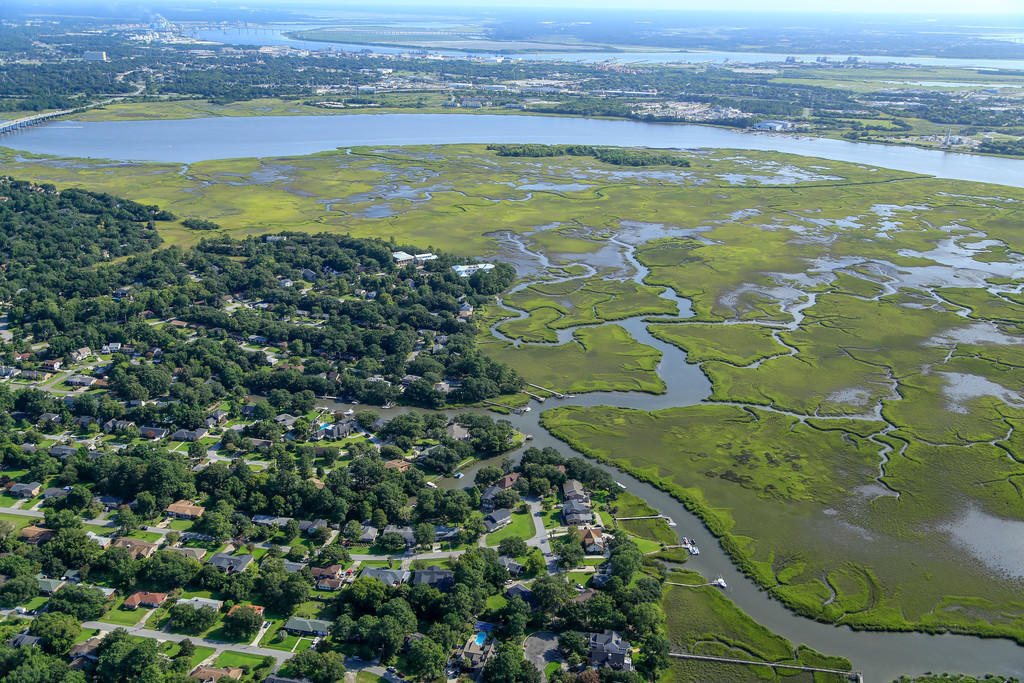HOA Management in West Ashley, SC
William Douglas Management is a leader in customer service — the experience and expertise that your association needs and deserves!
CHARLOTTE COMMUNITY MANAGEMENT
West Ashley is a district of the City of Charleston. West Ashley, as is Charleston, is situated in the coastal region of South Carolina on the Atlantic Ocean. This region is also known as the “Low Country.” West Ashely, as the name implies, is on the west side of the Ashley River. The Ashley River is one of the three rivers, the Cooper and Wando rivers, that converged to create the natural harbor of Charleston. West Ashley’s motto is “The Birthplace of Charles Towne.”
The estimated 2020 population of West Ashley was 82,341.
Location/Coordinates – Latitude: 32°48′07.01″N, Longitude: 80°01′01.57″ W per Google Earth
Per Google Earth, the elevation is 23 feet above sea level.
Telephone area codes for West Ashley are 843 and 854
Charles Town (Charleston) was the first successful permanent English settlement in the Carolina colony. It was founded in 1670. The “Charles Town” name was derived from the English King, Charles II. West Ashley was the original site of the Charles Town settlement. It was located on Albemarle Point on the Ashley River. This original site is now known as Charles Towne Landing. Charles Towne Landing is 664-acres and has been preserved as a state historic site.
Charles Towne Landing was set aside as a state historic site to commemorate the tricentennial of South Carolina in 1970. There are ongoing archeological excavations on the site that are not open to the public. However, there are a great many activities that are available to be enjoyed by all.
There is a Fortified Area of Charles Town where palisades have been reconstructed. These palisades represent what the original Charles Town settlers constructed to protect against Spanish or Native American attacks. There are also reconstructed earthwork fortifications in this area, along with replica cannons. The Fortified Area’s reconstructions are done on the original site of those fortifications.
The Adventure is a ketch located at Charles Towne Landing. Ketches were 17th-century cargo ships that plied the seas along the Carolina colony. The Adventure currently at Charles Towne Landing was constructed in 2008 to replace the original Adventure that was built in 1969 and was at Charles Towne Landing until 2004. The new Adventure was built in Maine by Rockport Marine and sailed to West Ashley in 2008.
The Animal Forest is a natural animal habitat preserve. The preserve is home to animals that were native to the region at the time the first settlers arrived. Some of the animals include bison, red wolves, river otters, and an array of birds.
There is an Experimental Crop Garden. The garden represents crops grown by the early Charles Town settlers. There is an exhibit hall, nature trails, and picnic sites at Charles Towne Landing. The address for Charles Towne Landing is 1500 Old Towne Road, Charleston.

The founding of the first Charles Town
When King Charles II was restored to the English throne in 1660, he rewarded eight loyal supporters of his accession back to the throne. These eight men became known as the Lord’s Proprietors of Carolina when Charles II granted these eight men the “Carolina” colony. The Carolina land grant was executed through the Carolina land charters of 1663 and 1665.
Charles II retained sovereignty over Carolina while granting the Lord’s Proprietors broad authority to govern and encourage immigration to the colony. To induce immigration, the Lord’s Proprietors were offering land grants and free transportation to the colony. The Lord’s Proprietors had taxing authority with hunting and mineral rights. They established civil authority and formed a judiciary to maintain order.
The “Grand Model” or “Grand Modell” was authored by English philosopher John Locke and one of the Lord’s Proprietors, the 1st Earl of Shaftesbury. The Grand Model was made up of a constitution along with a settlement and development plan for the Carolina colony. The constitution within the Grand Model was called the “Fundamental Constitutions of Carolina.” This constitution was considered extremely radical for the time period. It was comprised of 120 articles, and these articles addressed many topics. Most notably, an article addressed religious tolerance.
The settlement and development plan found within the Grand Model contained guidelines outlining the establishment of settlements, regional planning, and economic development. However, the Fundamental Constitution of Carolina was never ratified. Charles Town was under the authority of the Lord’s Proprietors of Carolina from 1670 until 1729.
It would take seven years after Charles II’s land charter of 1663 before the Lord’s Proprietors helped establish Charles Town in 1670. The departure of the original Charles Town settlers was noted in the London Gazette, England, September 6, 1669, edition with the following quote: “Falmouth, August 30”, “…Carolina, the Albemarle and one other ship (the Port Royal) bound with passengers for the Plantation of Carolina, a Colony in America, which three last put to sea the 28th instant with a fair wind…”
The largest ship, the Carolina, was a three-mast ship of around 200 tons. Conflicting passenger lists and accounts of passengers ranging from 92 to 150 passengers. Historians generally accept the true number to be closer to 92 than to 150. The Port Royal was around 100 tons with three masts. The smallest of the three ships was the Albemarle at 30 tons and a single mast.
Captain Joseph West was in command of all three ships. The Lord’s Proprietors commissioned him to set sail from the English port of Falmouth to the Irish Port of Kinsale. In Ireland, West was to pick up more colonists and then sail onto Barbados. The ultimate destination was to be Port Royal, Carolina (Beaufort, SC). When the three ships reached the Irish Port of Kinsale, a few passengers disembarked, and it appears no new colonists were enticed to board for the journey to Port Royal. The three ships departed Ireland on September 17, 1669.
In October of 1669, West brought the three ships into the Port of Saint Michael (Bridgetown), Barbados. The voyage took forty days at sea and sailed roughly 3,500 nautical miles. The three ships anchored and remained for several weeks in Barbados. Then on November 2, the Albemarle sank during a fierce storm. To replace the sunken Albemarle and carry her passengers, West retained the Three Brothers, a single-mast sloop.

Upon leaving Barbados, the three ships encountered another severe storm and became separated. The Port Royal sank in the Bahamas. The Carolina and the Three Brothers took shelter from the storm at Nevis Island and, once the storm subsided, sailed for Bermuda. The Carolina and the Three Brothers became separated in another storm. The Three Brothers were blown off course and landed on the Virginia coast. After an eventful 1,200 nautical mile voyage from Barbados, on January 12, 1670, the Carolina finally arrived in Bermuda.
On February 26, 1670, the Carolina set sail from Bermuda for the original destination of Port Royal. While the destination was supposed to be Port Royal, the Carolina landed in the Seewee Bay marshes around March 21, 1670. The marshes of Seewee Bay are near present-day Bull Island.
The Native Americans, the Kiawah people, were friendly to the landing party of the Carolina. The new colonists were uncertain whether to establish their settlement where they initially landed or the original destination of Port Royal. The Kiawah’s chief encouraged the colonist to settle at a site a little further down the coast, at a site that would become Albemarle Point in present-day West Ashley, now known as Charles Towne Landing Historic Site.
The colonists sent a sloop to investigate the Albemarle Point location. They sailed the sloop along the coast until they came to harbor created by the confluence of the Ashley, Cooper, and Wando rivers. Over thousands of years, these three rivers merging into the Atlantic Ocean formed a natural harbor known as Charleston Harbor. Traveling approximately eight miles into the harbor and up the Ashely River, the colonist selected the Albemarle Point as the original Charles Town.
It was reported in 1672 that Charles Town had 200 to 300 colonists living in 30 houses. The population of the original Charles Town, over the next ten or so years, slowly migrated to a second settlement on Oyster Point. Oyster Point, the peninsula, is what became present-day Charleston. The Oyster Point settlement became the new official Charles Town in 1680. While diseases such as malaria were an issue at Albemarle Point, the peninsula was deemed more defendable from Spanish attacks. In 1690, the population of Charles Town was 1,200, making it the fifth-largest city in the North American colonies.
After the abandonment of the first Charles Town in 1680, not much happened beyond agriculture development over the next nine decades. During the American Revolution (1765 – 1783), a few minor engagements took place in West Ashley, Rantowles Creek, and Old St. Andrew’s Church. At Rantowles Creek, Continental Army Major William Washington’s (second cousin to George Washington), cavalry force defeated Banastre Tarleton’s cavalry force. During the British Siege of Charleston, much of West Ashley was occupied by British troops.
During the American Civil War, north of West Ashley, during Sherman’s March to the sea, Union forces burned Middleton Place Plantation. Ashley Hall Plantation and Magnolia Plantation and Gardens in West Ashley are listed on the National Register of Historic Places.
Residential development only came to West Ashley in the 1950s. When Interstate 526 was completed in the early 1980s and South Carolina Highway 461 was completed in the 1990s, residential development followed both these road infostructure developments. Today the main roads in West Ashley are SC Highway 7 (Sam Rittenberg Blvd), US Highway 17 (Savanah Highway), SC Highway 461 (Paul Cantrell Blvd/Glen McConnell Parkway), and Interstate 526.
Need Association Management?
Contact Us
How to Start
The Process of Working With Us


REQUEST A PROPOSAL
Request a proposal online or call us directly.


WE WILL REVIEW YOUR CASE
Our team of highly trained professionals will review your case.


RECEIVE A CUSTOM TAILORED PLAN
We will create a customized management plan for your community.


SEAMLESS TRANSITION
We will implement a seamless management transition and integrate our tech.


SIT BACK & RELAX
Enjoy better, affordable and a more reliable, hassle-free management system.




